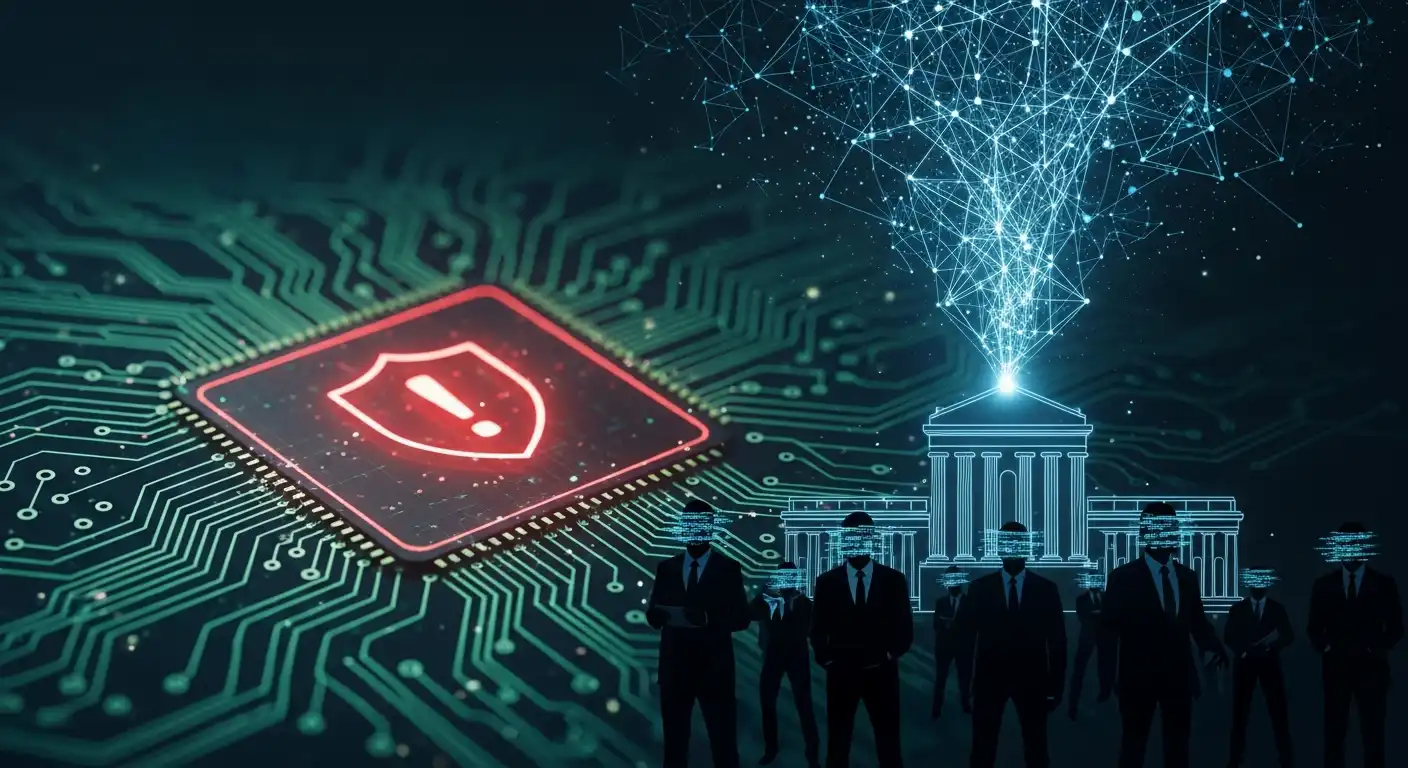Cybersecurity Regulation & Data Breach Litigation in 2025
The year 2025 marks a defining moment in U.S. cybersecurity and data privacy law.
Corporate boards are being forced to treat cyber risk as a central legal and financial concern,
while regulators and courts are expanding the boundaries of data breach liability.
From federal oversight to evolving state laws, cybersecurity regulation now influences everything
from corporate governance to insurance underwriting.
1. The Expanding Cybersecurity Risk Environment
Cyberattacks have evolved beyond mere data theft. Ransomware gangs now exfiltrate and publicly leak sensitive data,
while nation-state actors target supply chains and infrastructure. The global average cost of a data breach reached
$4.88 million in 2025, according to industry estimates — a 17% increase from 2023.
These attacks have real legal consequences. Failure to maintain adequate cybersecurity controls can result in
federal investigations, multimillion-dollar settlements, and derivative shareholder suits.
As a result, corporate legal teams and CISOs are now aligned under one goal:
“legal defensibility through cybersecurity maturity.”
2. Major Regulatory Developments in 2025
2.1 State-Level Privacy Laws Lead the Charge
With no comprehensive federal privacy statute, states continue to fill the gap.
By mid-2025, 18 states have enacted broad privacy and cybersecurity statutes.
The California Privacy Rights Act (CPRA) remains the benchmark,
but newer laws in Texas, Oregon, and New Hampshire introduce enhanced cybersecurity mandates —
including requirements for encryption at rest and annual risk assessments.
These state frameworks now extend into cybersecurity governance itself.
Many require documented security programs, vendor risk management, and executive oversight.
Organizations that treat compliance as a “checkbox exercise” are finding themselves outpaced by enforcement.

2.2 Federal Agencies Step Up Oversight
At the federal level, the Federal Trade Commission (FTC) continues to treat
“unreasonable data security” as an unfair practice under Section 5 of the FTC Act.
In 2025, the agency issued record-setting penalties for repeat offenders that failed to patch known vulnerabilities.
The Securities and Exchange Commission (SEC) finalized new rules requiring
public companies to disclose material cyber incidents within four business days.
Executives must now certify cybersecurity risk controls much like financial reporting,
creating potential liability for misleading statements or omissions.
Other regulators — including the Department of Health and Human Services (HHS) for HIPAA enforcement
and the Department of Homeland Security (DHS) under the Cyber Incident Reporting for Critical Infrastructure Act (CIRCIA) —
are coordinating enforcement more closely than ever.
2.3 AI Regulation & Cyber Accountability
Artificial intelligence is at the center of new compliance headaches.
The FTC, the National Institute of Standards and Technology (NIST), and several states
are developing frameworks requiring organizations to assess AI model risk and
data security for training datasets.
AI-generated data leaks, model inversion attacks, and “hallucinated” confidential outputs
are already raising legal questions: Who is liable when an AI system mishandles personal data?
The answer increasingly depends on whether the deploying organization implemented reasonable safeguards
and documented its risk analysis.
2.4 Incident Reporting Tightens Nationwide
States like New York and Colorado now require breach notification within 72 hours for regulated entities.
Financial institutions face even stricter standards under the updated NYDFS Cybersecurity Regulation (Part 500),
which took effect in 2025.
Late reporting or incomplete disclosure can trigger both fines and civil suits,
as plaintiffs use delayed notification as evidence of negligence.
3. Data Breach Litigation Trends
3.1 Explosion of Class Actions
The U.S. continues to see a dramatic rise in data breach class actions.
Between 2020 and 2025, filings have more than quadrupled.
Plaintiffs’ firms have become highly specialized, using sophisticated cyber-forensics experts
and leveraging evolving privacy statutes to argue broader categories of harm.
Recent cases illustrate the changing tide. In Doe v. MegaHealth Corp (2025),
a federal court in Illinois allowed claims for “anxiety and emotional distress” following a medical data leak —
even without proof of financial loss.
That decision signals increasing judicial acceptance of intangible harms.
3.2 Settlement Values Continue to Rise
Multi-million-dollar settlements are becoming the norm.
In early 2025, a major financial institution agreed to pay $28 million to resolve claims
stemming from a cloud-configuration error that exposed customer records.
Courts are also approving higher attorney-fee percentages, incentivizing more filings.
3.3 New Frontiers: Shareholder & Derivative Actions
A growing number of investors are suing corporate directors for breach of fiduciary duty
after major cyber incidents.
Shareholder derivative suits argue that boards failed to implement adequate risk oversight —
a claim bolstered by SEC disclosure requirements.
The Delaware Chancery Court’s rulings in 2024–2025 have confirmed that directors
must exercise “good faith oversight” of cybersecurity, or face personal liability.
4. Common Theories of Liability
- Negligence: Failure to implement reasonable security measures or respond promptly to known threats.
- Breach of Contract: Violations of user or partner data protection promises.
- Statutory Violations: Breach of state privacy acts (CPRA, VCDPA, etc.).
- Unjust Enrichment: Profiting from user data without safeguarding it.
- Invasion of Privacy: Unauthorized access or disclosure of sensitive personal data.
Each theory carries distinct evidentiary burdens, but all hinge on whether a company maintained
a defensible cybersecurity program. Documenting compliance efforts and continuous improvement
is now a critical legal shield.

5. Evolving Defenses in Cyber Litigation
5.1 Standing Challenges
Defendants continue to argue lack of standing under TransUnion v. Ramirez (2021),
claiming plaintiffs must prove concrete harm.
While some courts accept “risk of future identity theft” as injury, others demand actual misuse.
The split among circuits keeps uncertainty high.
5.2 Arbitration Clauses & Class Waivers
Many companies are reinforcing arbitration provisions in their user agreements.
Following appellate rulings in 2025, enforceable arbitration clauses have proven
effective at dismissing large class claims — provided users were clearly notified.
5.3 Compliance as a Defense
Courts increasingly consider adherence to recognized frameworks such as NIST CSF, ISO 27001,
and the Center for Internet Security (CIS) Controls as evidence of “reasonable security.”
While not an absolute defense, these frameworks help demonstrate due diligence.
5.4 Insurance & Indemnification
Cyber insurance has become an essential litigation tool.
Policies covering regulatory fines, breach response, and class-action defense costs
now include strict compliance conditions.
Failure to meet minimum security controls can void coverage, creating new audit pressures for policyholders.
6. Enforcement and Penalties in 2025
Government penalties for poor cybersecurity have increased sharply.
The Department of Justice (DOJ) continues its “Civil Cyber-Fraud Initiative,”
which uses the False Claims Act to pursue federal contractors that misrepresent their security posture.
In 2025, the DOJ announced over $500 million in recoveries under this program alone.
Similarly, the Department of Health and Human Services imposed multiple HIPAA penalties
exceeding $1 million each for unencrypted data breaches.
The FTC and state attorneys general are coordinating more often,
sharing forensic findings and co-signing consent decrees to enforce uniform security practices.
7. Cross-Border Considerations
For multinational organizations, compliance does not end at the U.S. border.
The EU’s GDPR and the newly effective U.K. Online Safety Act impose additional obligations
around breach notification and data transfers.
Inconsistent standards have made compliance costly — but courts are now using international benchmarks
to measure “reasonable” security even for domestic entities.
U.S. businesses processing EU data must maintain updated Standard Contractual Clauses (SCCs)
and implement adequate transfer impact assessments.
Noncompliance can attract penalties from both EU and U.S. authorities.

8. Practical Strategies for 2025 and Beyond
8.1 Board-Level Cyber Governance
Boards should establish dedicated cybersecurity committees, receive quarterly threat briefings,
and integrate cyber risk into enterprise risk management frameworks.
Having cybersecurity on the board agenda is increasingly seen as part of directors’ fiduciary duty.
8.2 Document, Test, and Audit
Regulators and plaintiffs alike value documentation.
Maintain updated security policies, penetration-testing reports, and risk registers.
Independent third-party audits can demonstrate diligence and help secure better insurance terms.
8.3 Incident Response Drills
Run simulated breach exercises that include legal, communications, and technical teams.
Practicing disclosure procedures and public statements in advance can drastically reduce
reputational damage when incidents occur.
8.4 Employee Training and Access Control
Over 80% of breaches originate from human error.
Invest in continuous security awareness training, phishing simulations, and least-privilege access models.
A well-trained workforce remains the most effective cybersecurity control.
8.5 Vendor & Supply-Chain Management
Review third-party vendors regularly for security posture and contractual compliance.
Include specific breach-notification clauses, audit rights, and indemnification terms.
A single vendor vulnerability can cascade into enterprise-wide liability.
9. Future Outlook: The Legal Landscape Beyond 2025
Several trends are poised to reshape cybersecurity litigation further:
- Federal Privacy Legislation: Congress continues to debate a national data protection framework, potentially pre-empting state laws.
- AI Accountability: Expect new obligations on AI transparency, bias mitigation, and data protection.
- Cyber Incident Reporting Harmonization: Agencies may unify reporting rules across sectors to reduce confusion.
- Increased Personal Liability: Executives and directors could face individual exposure for misstatements about security controls.
Companies that embed compliance, transparency, and continuous improvement into their cybersecurity culture
will fare best in this rapidly shifting regulatory climate.
10. Key Takeaways
- Cybersecurity regulation in 2025 emphasizes disclosure, accountability, and continuous monitoring.
- Litigation risk is expanding beyond consumers to shareholders and regulators.
- AI, third-party risk, and cross-border data transfers are major enforcement priorities.
- Boards and executives must demonstrate active cybersecurity oversight to limit liability.
- Documentation, testing, and staff training remain critical legal defenses.
Conclusion
Cybersecurity regulation and data breach litigation in 2025 represent a convergence of technology, law, and governance.
The question is no longer whether a company will face a cyber incident — but whether it can defend its actions afterward.
By adopting a proactive, regulation-first approach, organizations can protect both their data and their legal standing.
For deeper insight into these developments, visit
Gibson Dunn’s Cybersecurity & Data Privacy Review 2025,
a trusted authority on emerging cyber law trends.
